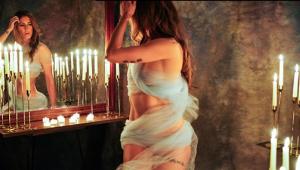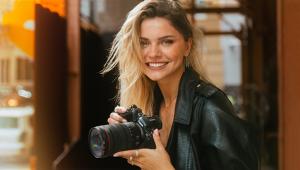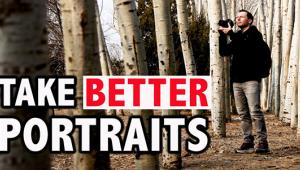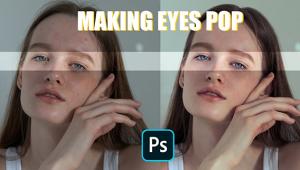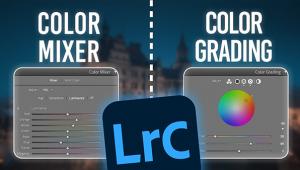Point & Shoot: How to Shoot Self Portraits
|
Shooting a self-portrait is a challenging task, but can be very rewarding. The one person that most photographers probably photograph least is themselves, and this is true even with those who enjoy shooting portraits of others. However, taking self-portraits has several advantages: you'll always have a willing subject, and you may be able to interpret the "real you" better than others can. You can also use yourself as a test subject for experimenting with lighting or other creative techniques.
There are several ways to approach self-portraits. One way is to frame an interesting composition and then, with your compact camera mounted on a tripod or another means of support, use the self-timer (if your camera has one) to trip the shutter after you get into position in front of the lens. Just remember that a self-timer will give you a very limited amount of time to get in position (usually 10 seconds). It helps if you can get a friend to be a stand-in until you can be there, or mark your spot with tape or chalk. A mirror or some other reflective surface offers an even easier way to take a self-portrait. In most cases, the camera will be included in the scene (but this can help make a statement about your enthusiasm for photography). You can use your camera as a prop, and hold it away from your face. When you photograph into a mirror, be sure your reflection is in focus. An infrared autofocusing system will usually focus on glass if it's aimed into a mirror, and will focus at infinity if aimed at an angle. You might try focusing at an object that's the same distance as the distance from the camera to the reflection, lock in the focus, recompose the image to include yourself, and take the picture. You can create an especially revealing self-portrait by adding personal memorabilia surrounding your mirrored image, such as photos of yourself at various stages of your life, or anything that tells the viewer about your interests. Besides a mirror, a window can sometimes offer a reflective surface for you to capture your own image. Photographing your shadow is another way to do a self-portrait. Shoot early or late, when the sun is low in the sky. A light, stucco wall, a sidewalk, or any other simple background can suffice. Just be sure there aren't a lot of distractions around the surface you choose. You can also capture a self-portrait by supporting your camera, then frame your picture and focus with a stand-in. Place a mirror just behind the camera, and do your final posing in the mirror. This method also requires a self-timer, or a remote triggering device if your camera has one. Once again, if you use a self-timer, you'll need to get into position before it goes off. A self-portrait doesn't have to be of your face—the image of two hands holding a camera says a lot about the photographer who shot his own portrait. You can also aim the camera down your body from eye level. I once took a photo of my own feet in hiking shoes, hanging over the edge of a rocky outcropping in a scenic spot (if you try something like this, just make sure you're in a safe place that you won't fall from). A picture like this will say a lot about your activities and surroundings. Use your imagination! A self-portrait can reveal a lot about you, by including props and even other people that are meaningful in your life. If you've never attempted to shoot a self-portrait, expand your creative horizons and give it a try. |
- Log in or register to post comments









